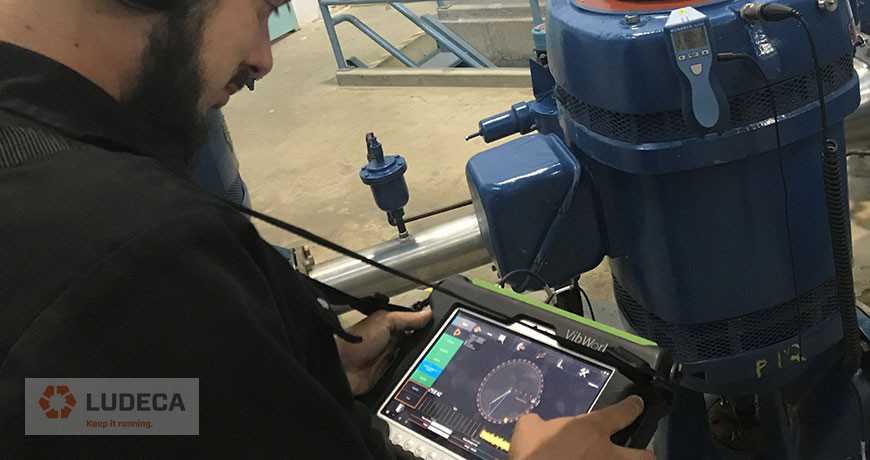
The following facts are principles that form the basis for the balancing of machinery.
When a person determines that a rotating machine needs to be balanced, a few things should be kept in mind
- The vibration caused by imbalance always occurs at 1× RPM of the unbalanced rotor.
- The vibration is directly proportional to the amount of unbalance. Doubling the amount of the unbalance doubles the amount or amplitude of the vibration.
- A shift in the heavy spot results in an equal shift in the phase angle.
- All weights in a single plane can be summed vectorially to equal a single heavy spot.
- The amount of unbalance is measured in mass and distance from the center of the rotor (radius); e.g., oz./in., gm./in., or gm./cm. Increasing the weight or the radius increases the amount of force the unbalance generates in direct proportion.
- Rotors operating below their first critical are called rigid rotors. These can be balanced in any two planes. Rotors operating above their first critical are called flexible rotors and may require balance weights in more than two planes.
Preparing for the Balance Job
Once you have determined through careful analysis that imbalance is the forcing function and that field balancing is needed, your initial preparations should include:
- If the rotor has significant environmental material or process material adhering to the surfaces, then have it thoroughly cleaned. The rotor may return to acceptable balance conditions when clean.
- Check all hold-down/mounting bolts for looseness.
- Mount vibration transducers at the bearing. The transducers should be rigidly mounted to the bearing, never hand-held, and should not be moved during the entire process.
- Provision to read phase within 5°. Take phase readings from one shaft reference throughout the balance operation, even if there is more than one correction plane. A rigidly mounted reference transducer, such as a laser tach or magnetic proximity pickup is preferred rather than a strobe, whenever possible.
- The operating frequency should be repeatable run to run.
- Assurance that the vibration and phase data are repeatable. If phase and amplitude from a balance run cannot be repeated, it may be due to loose parts, chips, water soluble lubricant, rust, water, or other types of foreign matter in the rotor.
- Availability of correction weights and a means of determining the weight.
The goal is for all variations in phase and amplitude to be due to changes arising from the movement or application of weights, not due to poor technique. Good technique will minimize the required runs and improve the final precision of the balance job.
Download our Unbalance & Vibration infographic a reference guide to unbalance conditions. Pair it with our advanced VIBWORKS Balancer to help you identify, correct, and avoid the unwanted consequences of equipment unbalance!
What Causes Machinery Unbalance? Here are 10 Factors Preventing a Successful Balancing Job
Filed under:
Balancing by Gary James CRL
